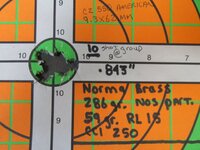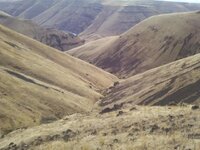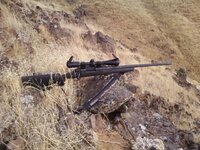- Messages
- 3,115
- Reactions
- 6,599
Hi guys, we often talk about OAL, case prep, bullets and powders. But how many of you check the run-out/concentricity of your loaded rounds? In my experience, this is one of the most useful tools a guy can have for helping to develop consistently accurate ammo. I use an old time Brown Precision little wiggler, developed by the bench rest shooter Chet Brown, back in the 70's. This tool, not only checks loaded ammo for TIR, but it also adjusts/corrects concentricity. However, my primary use for this tool is to help set up the seater die for minimal run-out. Here's the little wiggler and some of the groups I've shot after checking and correcting concentricity:





If I'm shooting a centerfire match, I'll make sure all of my ammo is dialed in and straight to less than .002". How many of you check run-out and what is your favorite tool. I know Hornady and RCBS make them. Share your experience and post some before and after targets if you noticed a change for the better after straightening your ammo. Thanks...





If I'm shooting a centerfire match, I'll make sure all of my ammo is dialed in and straight to less than .002". How many of you check run-out and what is your favorite tool. I know Hornady and RCBS make them. Share your experience and post some before and after targets if you noticed a change for the better after straightening your ammo. Thanks...













